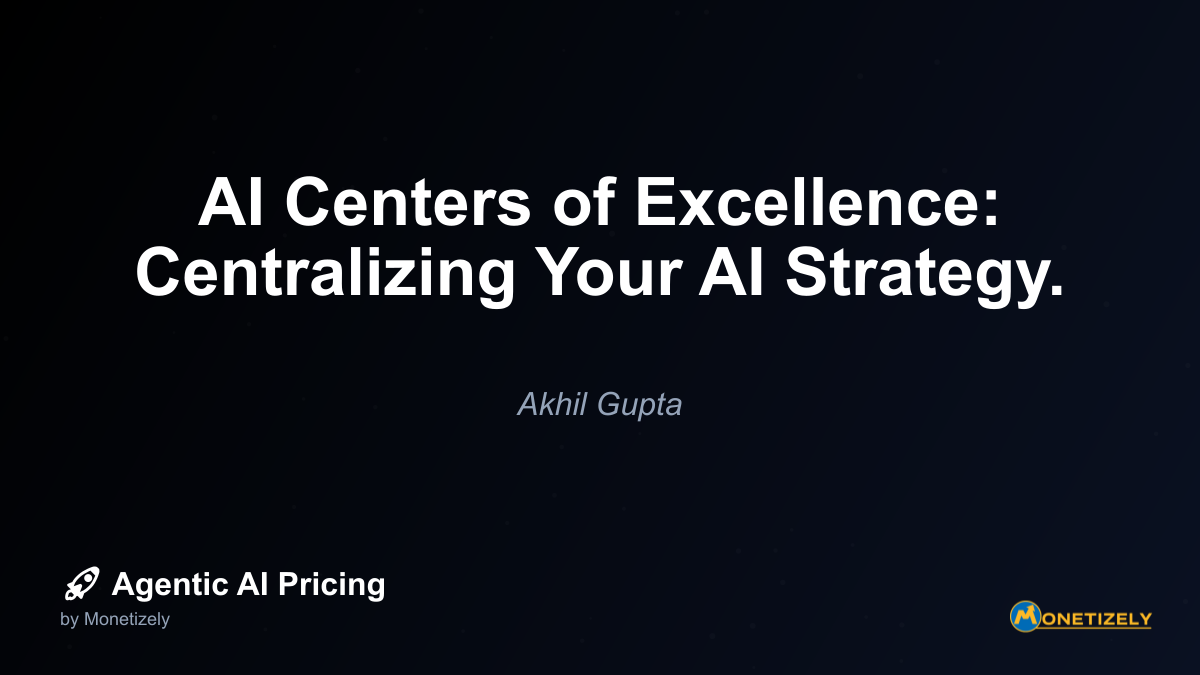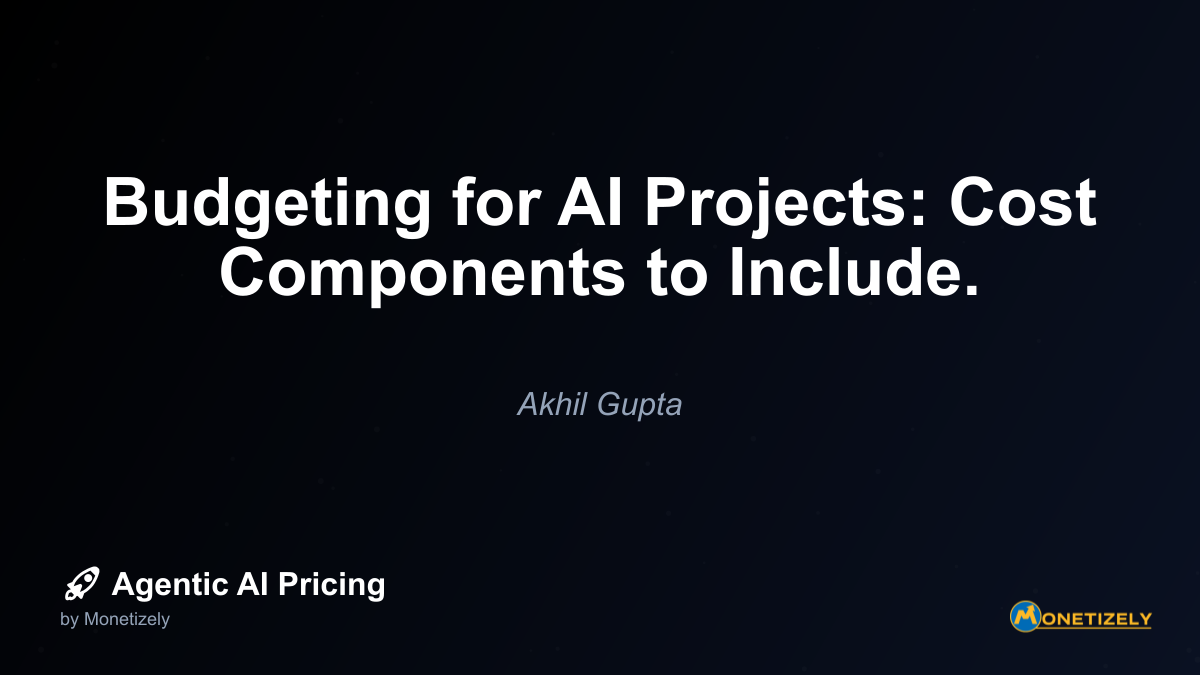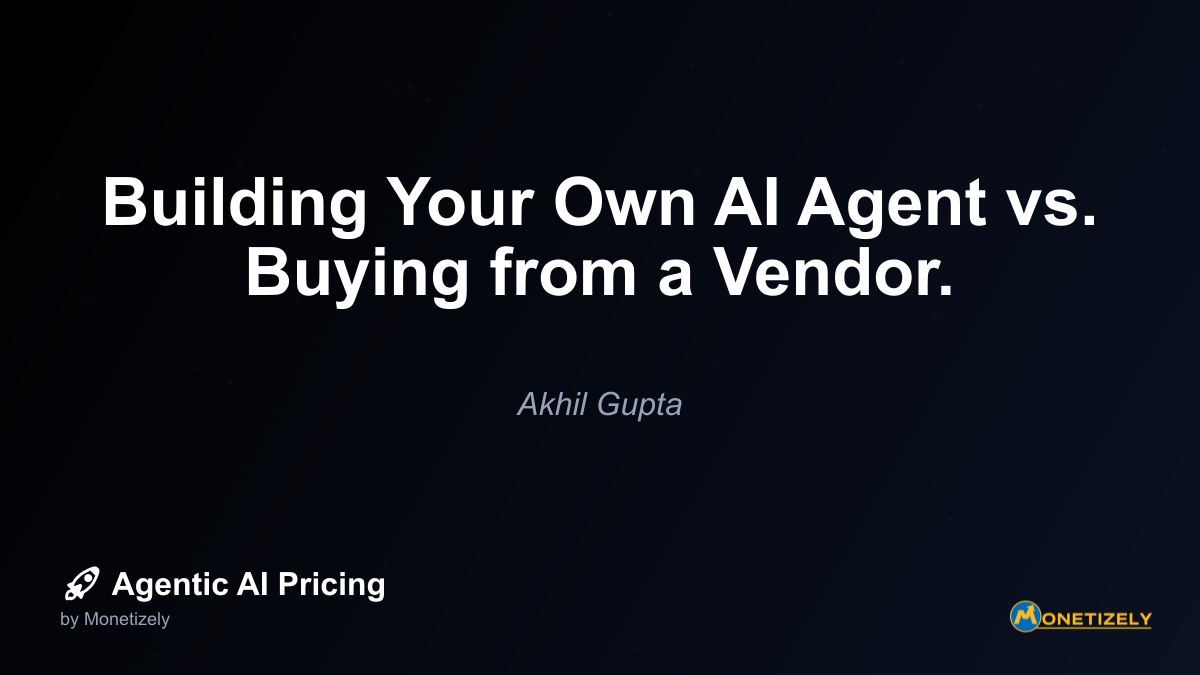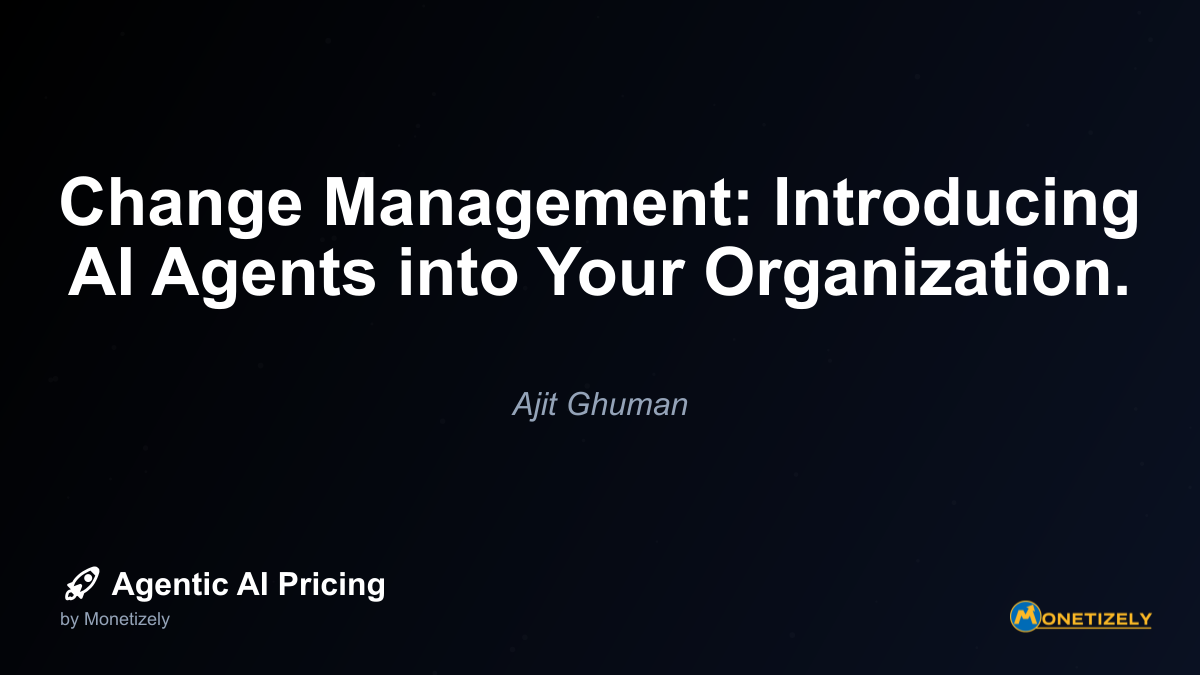· Akhil Gupta · Implementation Strategies · 5 min read
Balancing Automation and Human Oversight.
AI and SaaS Pricing Masterclass
Learn the art of strategic pricing directly from industry experts. Our comprehensive course provides frameworks and methodologies for optimizing your pricing strategy in the evolving AI landscape. Earn a professional certification that can be imported directly to your LinkedIn profile.
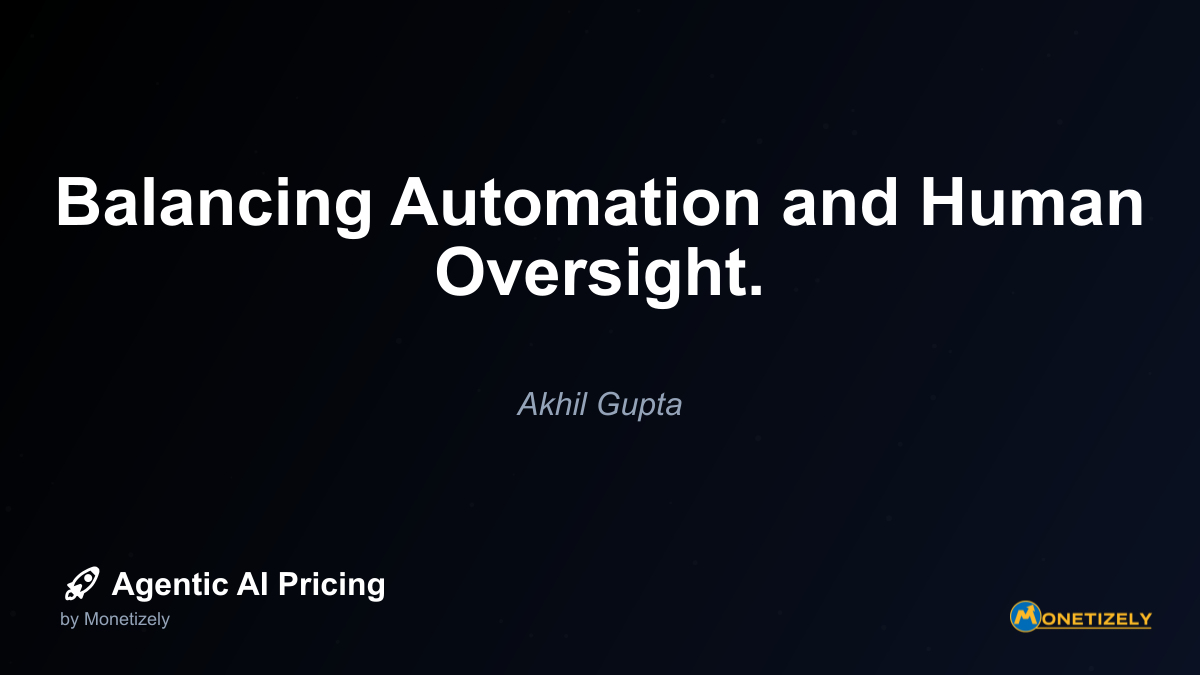
The Human Factor in AI Pricing Implementation
Implementing agentic AI pricing systems requires thoughtful consideration of the human element at multiple levels:
Executive Sponsorship and Governance
Senior leadership plays a crucial role in establishing the governance framework for AI pricing systems. This includes:
- Setting clear boundaries for autonomous AI decision-making
- Defining escalation paths for exceptional situations
- Allocating resources for effective human oversight
- Establishing accountability for system outcomes
- Creating policies for handling edge cases and exceptions
Without executive commitment to appropriate oversight, AI pricing initiatives may drift toward excessive automation or ineffective human intervention processes.
Team Structure and Skills Development
Organizations implementing AI pricing systems need teams with the right skills to provide effective oversight:
- Pricing analysts need training to interpret AI recommendations and identify potential issues
- Data scientists must understand business context to design appropriate escalation criteria
- Customer-facing staff require guidelines for explaining AI-influenced pricing decisions
- IT teams need processes for monitoring system performance and addressing technical issues
As AI systems mature, the nature of human oversight evolves. Initially, humans may review a high percentage of decisions. Over time, as the system proves reliable, oversight might shift toward monitoring system-level metrics rather than individual decisions.
Ethical Considerations in Agentic AI Pricing
Ethical implementation of AI pricing requires robust human oversight, particularly in areas where algorithmic decisions might impact fairness or customer trust. As highlighted in our article on Ethical AI Pricing target=“_blank”, avoiding bias and discrimination requires vigilant human monitoring.
Key ethical considerations include:
Transparency and Explainability
Customers increasingly expect transparency around how prices are determined. Human oversight helps ensure that pricing decisions remain explainable, even when driven by complex algorithms.
For B2B pricing, this might involve:
- Training sales teams to explain the factors influencing personalized pricing
- Providing appropriate documentation for price variations
- Ensuring customer-facing staff can articulate the rationale behind pricing recommendations
Fairness Across Customer Segments
Human reviewers should regularly assess whether AI pricing recommendations treat different customer segments equitably. This includes monitoring for potential discrimination based on geography, company size, industry, or other characteristics.
Regular audits of pricing outcomes across different segments can identify potential fairness issues before they become problematic.
Balancing Personalization and Privacy
As AI pricing systems leverage increasingly detailed customer data to personalize offerings, human oversight helps balance personalization benefits against privacy considerations. Reviewers should assess whether data usage aligns with customer expectations and regulatory requirements.
Case Studies: Successful Human-AI Collaboration in Pricing
Enterprise Software Provider: Tiered Oversight Model
A leading enterprise software provider implemented a tiered oversight model for their AI pricing system:
- Tier 1 (Fully Automated): Standard product bundles for small businesses, with pricing automatically optimized within narrow parameters
- Tier 2 (Limited Oversight): Mid-market deals reviewed by AI with sampling-based human oversight
- Tier 3 (High Oversight): Enterprise deals where AI provides recommendations but human account executives maintain decision authority
This approach allowed the company to scale pricing operations efficiently while maintaining appropriate human involvement for high-value, complex deals.
Results included:
- 35% reduction in pricing decision time
- 12% improvement in pricing consistency
- 8% increase in deal profitability
- Maintained high customer satisfaction in enterprise segment
E-commerce Retailer: Dynamic Pricing with Guardrails
An online retailer implemented dynamic pricing with a sophisticated oversight system:
- AI algorithms continuously adjusted prices based on demand, inventory, and competitive data
- Human-defined guardrails prevented extreme price movements
- Category managers received alerts when prices approached guardrail boundaries
- Weekly reviews examined pricing patterns across product categories
- Monthly audits assessed pricing fairness across customer segments
This balanced approach allowed the retailer to capture the efficiency benefits of dynamic pricing while maintaining strategic control and avoiding potential pricing errors.
The system delivered:
- 18% improvement in margin contribution
- 7% reduction in excess inventory
- Elimination of pricing errors that previously affected approximately 2% of SKUs
- Enhanced ability to respond to competitive price changes
Implementation Roadmap for Balanced Oversight
Organizations looking to implement agentic AI pricing with appropriate human oversight should consider this phased approach:
Phase 1: Foundation Setting
- Define oversight principles: Establish clear guidelines for when and how humans should be involved in pricing decisions
- Map decision types: Categorize pricing decisions by complexity, risk level, and strategic importance
- Design initial workflows: Create processes for routine decisions, exceptions, and escalations
- Establish metrics: Define how you’ll measure both efficiency and effectiveness
Phase 2: Controlled Implementation
- Start with high oversight: Begin with significant human review to validate AI performance
- Gather feedback: Collect input from reviewers about AI recommendation quality
- Refine escalation criteria: Adjust when decisions are escalated based on early performance
- Document common issues: Create knowledge base of typical scenarios requiring human judgment
Phase 3: Optimization
- Gradually reduce oversight: As confidence grows, decrease routine review frequency
- Implement sampling: Move from reviewing all decisions to reviewing representative samples
- Continuous learning: Use human decisions to train and improve the AI system
- Regular audits: Maintain periodic comprehensive reviews of system performance
Phase 4: Mature Operation
- Strategic oversight: Focus human attention on strategic pricing decisions
- Exception-based review: Limit routine review to unusual or boundary cases
- System-level monitoring: Shift from transaction-level to pattern-level oversight
- Ongoing governance: Maintain executive visibility into system performance
This phased approach allows organizations to capture efficiency benefits while building confidence in the AI system’s reliability.
Conclusion: Finding Your Optimal Balance
The most effective agentic AI pricing implementations strike a thoughtful balance between automation and human oversight. This balance is not static—it evolves as systems mature, teams develop expertise, and business needs change.
Key principles for maintaining an appropriate balance include:
- Risk-based oversight: Apply greater human involvement to higher-risk decisions
- Continuous improvement: Use human feedback to enhance AI performance over time
- Regular reassessment: Periodically review the effectiveness of oversight mechanisms
- Stakeholder alignment: Ensure pricing, sales, and executive teams share a common understanding of oversight roles
- Customer-centric perspective: Consider how oversight impacts customer experience
By thoughtfully implementing human oversight mechanisms, organizations can harness the efficiency and analytical power of agentic AI while preserving the strategic judgment, contextual understanding, and ethical awareness that humans bring to pricing decisions.
The future of pricing lies not in choosing between human judgment and AI capabilities, but in designing systems that leverage the strengths of both. Organizations that master this balance will gain significant competitive advantage through pricing that is simultaneously more efficient, more strategic, and more aligned with business objectives.
Co-Founder & COO
Akhil is an Engineering leader with over 16+ years of experience in building, managing and scaling web-scale, high throughput enterprise applications and teams. He has worked with and led technology teams at FabAlley, BuildSupply and Healthians. He is a graduate from Delhi College of Engineering and UC Berkeley certified CTO.
Pricing Strategy Audit
Let our experts analyze your current pricing strategy and identify opportunities for improvement. Our data-driven assessment will help you unlock untapped revenue potential and optimize your AI pricing approach.

